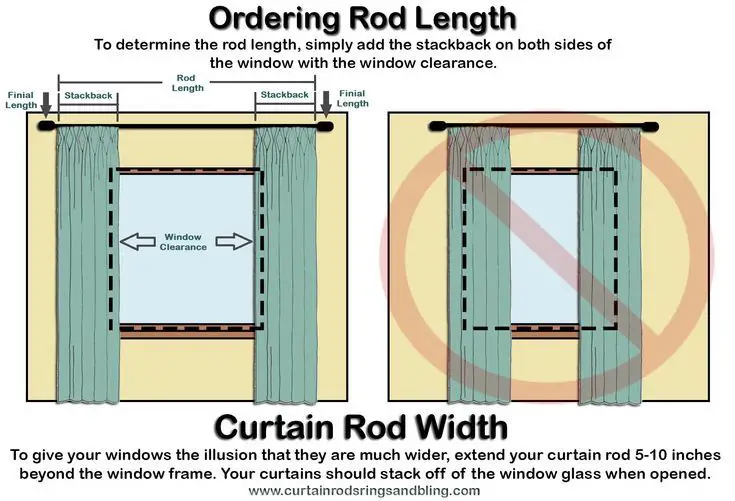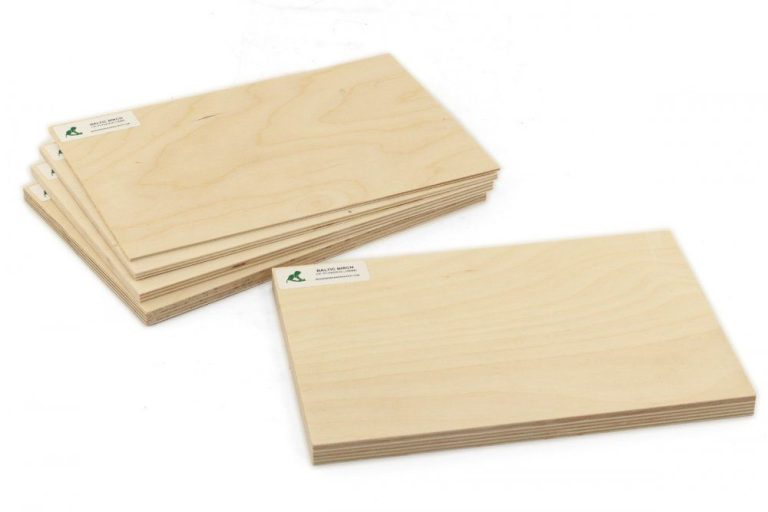Can Polymer Clay Jewelry Get Wet?
Polymer clay jewelry has become increasingly popular over the past few decades as an accessible and versatile jewelry-making material. Polymer clay, also known as resin clay or plastic clay, refers to modeling compounds made from polymers, fillers, and pigments that can be molded, shaped and baked into strong, durable jewelry and art pieces. Unlike natural clays like pottery clay, polymer clay remains malleable until it is cured by baking.
Polymer clay jewelry encompasses any jewelry like beads, pendants, charms, buttons and more that are made primarily from polymer clay. The baking process cures the clay into a hard plastic that won’t become brittle or melt. Jewelry makers use polymer clay for its versatility, ability to take fine details, bright colors, durability, lightweight nature, and affordable cost. From simple clay beads to intricately sculpted flowers, animals and focal pieces, polymer clay allows endless creativity for artisan homemade jewelry.
Popularity of Polymer Clay Jewelry
Polymer clay jewelry has risen steadily in popularity over the past decade. According to a market research report, the global polymer clay market is projected to reach $42.84 million by 2030, up from $31.3 million in 2022 (Virtue Market Research). This growth is driven by polymer clay’s versatility for DIY jewelry making and art projects.
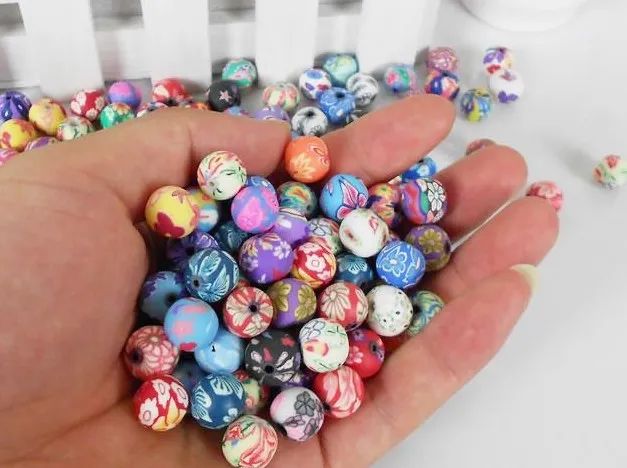
The polymer clay market grew rapidly since the 2000s as online tutorials made the craft more accessible (Persistence Market Research). Social platforms like YouTube, Pinterest and Etsy enabled creators to share techniques and sell finished products. Reddit discussions show polymer clay’s appeal for hobbyists and small business owners alike.
In 2021 polymer clay jewelry sales spiked during pandemic lockdowns as people explored new hobbies (Yahoo! Finance). Handmade earrings, pendants and sculptures remain popular on Etsy and at craft fairs. The organic, malleable material allows endless creative expression. As polymer clay crafts gain mainstream appeal, this art form is poised for continued growth.
Benefits of Polymer Clay Jewelry
Polymer clay offers many unique benefits for jewelry making compared to other materials. One of the biggest advantages is the unlimited creative potential. Polymer clays come in an extensive range of vibrant colors that can be blended and mixed to achieve any hue imaginable. The lightweight modeling clay is also extremely pliable and can be shaped into any form. According to Firefly Art Supplies, polymer clay is an incredibly versatile medium that allows artists to make stunning jewelry pieces in any style.
Another benefit of polymer clay is that it is lightweight once baked. The finished pieces are durable yet comfortable to wear. The clay is also hypoallergenic and non-toxic when cured properly. This makes it safe for use in jewelry even for those with sensitive skin, as noted in an article on Medium.com. Overall, the creative freedom, wide color selection, and lightweight properties make polymer clay an ideal material for unique, customizable jewelry.
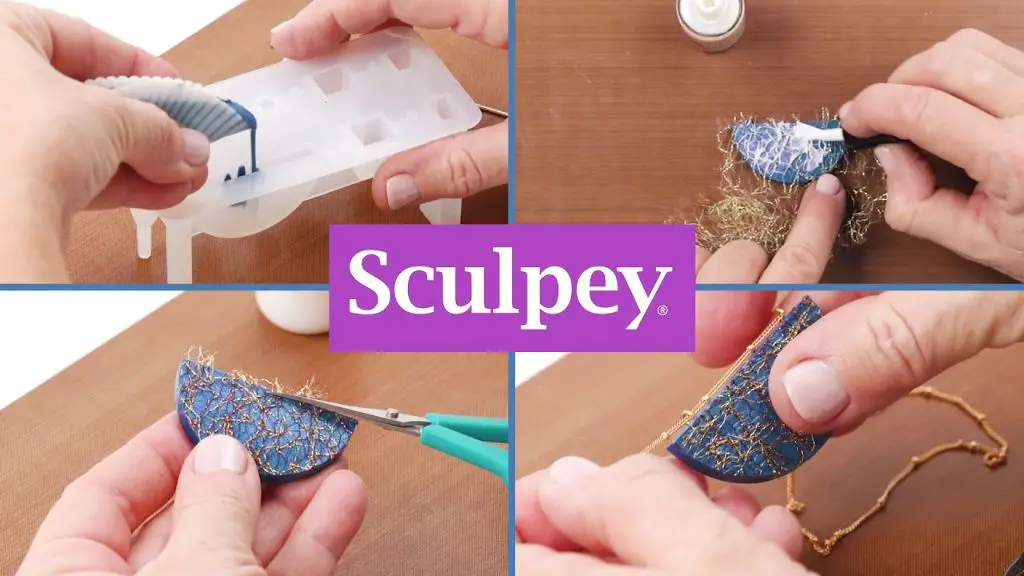
How Polymer Clay Jewelry is Made
Polymer clay jewelry is made through a process of shaping, baking, and finishing the clay. The clay begins in a pliable state that allows it to be molded into various designs. A popular technique for making intricate polymer clay jewelry is the cane technique, where the clay is stacked, cut, and manipulated to create patterns like a kaleidoscope.
Once the polymer clay is shaped into the desired jewelry design, it must be baked in a home oven to harden and cure the clay. Most brands of polymer clay require baking at 275°F for 15-30 minutes per 1/4 inch of thickness. It’s important not to underbake or overbake the clay. Underbaked clay will remain sticky and soft, while overbaked clay can become brittle and brown.
After baking, polymer clay jewelry can be sanded, buffed, and polished to smooth the surface and create shine. Additional embellishments like glaze, paint, or glass cabochons can be added. Findings like clasps, bails, and earring wires are used to turn the clay creations into wearable jewelry pieces. With simple at-home tools and supplies, unique and professional-looking polymer clay jewelry can be achieved.
Can Polymer Clay Jewelry Get Wet?
Polymer clay jewelry can get wet, but it is best to avoid submerging it in water or exposing it to moisture for extended periods of time according to Sculpey (1). When wet, polymer clay becomes soft and malleable again, which can distort the original shape of baked polymer clay creations. Prolonged moisture exposure can also degrade surface finishes, cause colors to bleed, and weaken the structural integrity of polymer clay over time.
However, brief contact with small amounts of water is generally fine. Light splashes or mist will not damage properly cured polymer clay jewelry. Allow any damp clay to fully dry before wearing to prevent softening or distortions. Polymer clay is not waterproof, so take precautions to limit moisture exposure and prevent any soaking of intricate clay jewelry or sculptures.
(1) https://www.sculpey.com/blogs/blog/wetting-polymer-clay
Protecting Polymer Clay Jewelry
Even though cured polymer clay is waterproof on its own, many jewelry artists still choose to seal their pieces to add extra protection and give the surface a nice glossy finish. There are a few different options for sealing polymer clay:
Polymer clay glaze – This liquid glaze is made specifically for polymer clay and comes in gloss or matte finishes. It protects the clay and makes the surface smooth and shiny. Apply 2-3 thin coats as the final step after baking your piece (Source 1).
Resin – You can coat polymer clay with a layer of resin to give it a glassy, waterproof seal. Use a two-part epoxy resin or UV-curing resin. Let it fully cure before wearing the jewelry (Source 2).
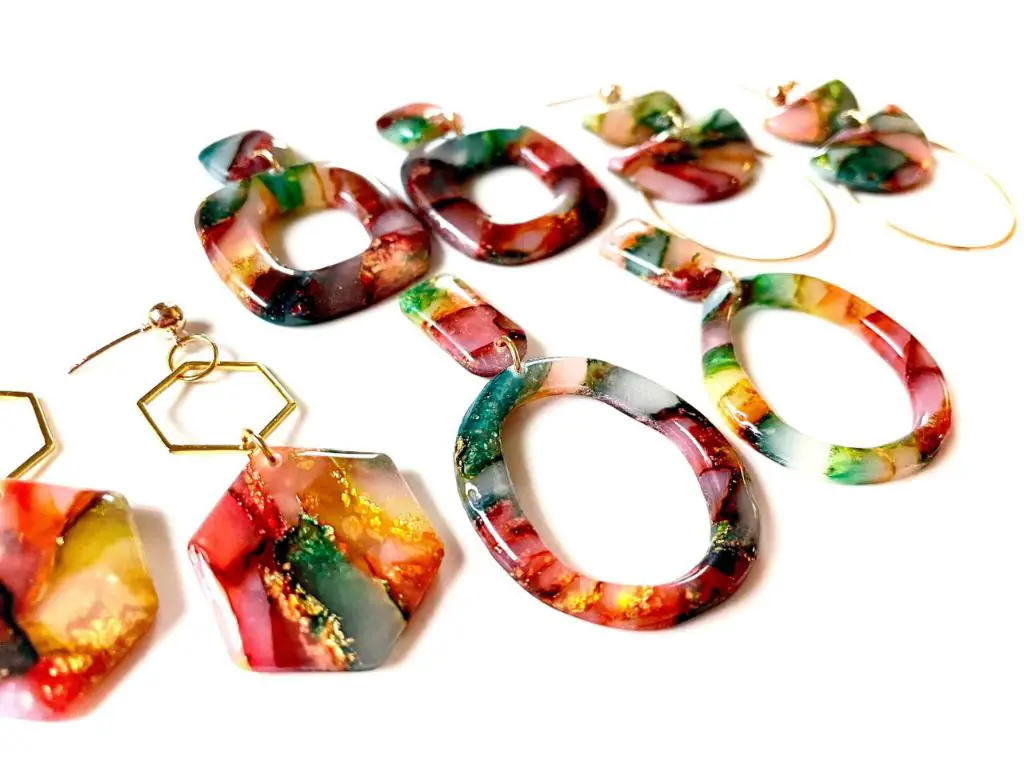
Clear acrylic spray – Aerosol acrylic sealers like Mod Podge give good coverage and protection. Spray in a ventilated area and allow it to fully dry. Multiple thin coats are better than one thick coat.
Caring for Polymer Clay Jewelry
Properly caring for polymer clay jewelry is important to keep it looking its best. Here are some tips for cleaning and storing your clay jewelry:
For cleaning, use a slightly damp, non-abrasive cloth to gently wipe the jewelry. Avoid using any harsh chemicals like acetone or alcohol which can damage the clay (Polymer Clay Jewelry Care Instructions).
Be very gentle when cleaning clay jewelry and do not bend the pieces. Treat them with care just like any other jewelry (Care Instructions for Polymer Clay Jewelry).
For storage, keep your polymer clay jewelry in a clean, dry area away from any moisture or humidity. Store pieces separately so they don’t rub against each other. You can use jewelry boxes, resealable bags or drawstring pouches (Caring for Your Polymer Clay Earrings).
Following these care and cleaning instructions will help your handmade polymer clay jewelry last for many years!
Fixing Water Damage
If your polymer clay jewelry gets wet, it may become dried out or cracked. However, there are a few ways to try reviving the clay and repairing the damage:
To rehydrate dried out clay, you can try soaking it in water for 10-15 minutes before reshaping and rebaking it. Be gentle when reshaping so you don’t create new cracks[1]. You may need to repeat this process a few times for very dried out pieces.
For cracked pieces, apply a thin layer of liquid polymer clay as “glue” and press the cracks together firmly. Let it dry fully, then sand any rough areas before rebaking according to package directions. This should fill and seal the cracks.
If rebaking doesn’t fully revive the clay, you may need to remove the damaged sections and re-sculpt replacement parts to attach to the intact areas of the jewelry. Use your creativity to work around any permanent damage rather than starting over.
With care and some patience, you can often repair damaged polymer clay jewelry to its original beauty and wearability.
Selling Polymer Clay Jewelry
When selling handmade polymer clay jewelry, it’s important to consider water resistance and properly market your products. Polymer clay can become brittle when exposed to water for extended periods of time. Pieces that will be frequently exposed to moisture, like rings or bracelets, may be more prone to damage and should be priced lower than earrings or necklaces that won’t get wet as often.
When marketing polymer clay jewelry online or at craft fairs, be sure to note that while beautiful, polymer clay is not meant for prolonged water exposure. Advise customers to remove pieces before washing hands, showering, swimming, etc. You can offer care instructions on your website or include a small card with each piece. Setting proper expectations from the start will minimize unhappy customers down the road.
Consider applying a water-resistant sealant like Mod Podge or polymer varnish to improve durability. Test pieces before and after sealing to evaluate effectiveness. Just be sure to note treatments in product descriptions and adjust pricing accordingly for the extra time and materials.
Lastly, focus on unique, artistic designs that play to polymer clay’s strengths like mokume gane, canes, and marbling. Price premium pieces higher to offset any discounts on basic jewelry prone to water damage. With reasonable care expectations set, even delicate polymer clay jewelry can become a customer’s favorite accessories.
Conclusion
In summary, polymer clay jewelry is a popular craft that produces beautiful, customizable accessories. While polymer clay can be waterproofed with sealants, it’s porous and not inherently water-resistant. Water exposure can lead to discoloration, distortion, cracking, or damage over time. To keep polymer clay jewelry looking its best, avoid prolonged water contact and reapply protective coatings regularly. With proper care, polymer clay jewelry can be worn and enjoyed while maintaining its original vibrancy and form. By understanding the relationship between polymer clay and water, crafters can protect their creations. With reasonable precautions, polymer clay jewelry can withstand occasional water contact without any issues.



